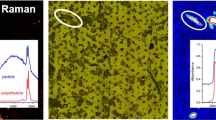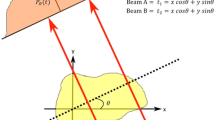Abstract
The basic principles of laser-induced breakdown (emission) spectrometry (LIBS) for the determination of elements in solids, liquids, and aerosols are presented. A description of the instrumentation, including laser, sample chamber, and detection is followed by a brief discussion of potential interferences from matrix effects. The importance of time resolution and space resolution to minimize these effects is presented. The advantages and disadvantages of LIBS over inductively coupled plasma-atomic emission spectrometry (ICP-AES) and graphite furnace atomic absorption spectrometry (GFAAS) for elemental analysis is summarized. Special applications in which LIBS could excel include remote sensing, detection in a hostile environment, and underwater determinations.
Similar content being viewed by others
Author information
Authors and Affiliations
Corresponding author
About this article
Cite this article
SNEDDON, J., LEE, YI. Laser-Induced Breakdown Spectrometry. Chem. Educator 3, 1–7 (1998). https://doi.org/10.1007/s00897980260a
Published:
Issue Date:
DOI: https://doi.org/10.1007/s00897980260a




